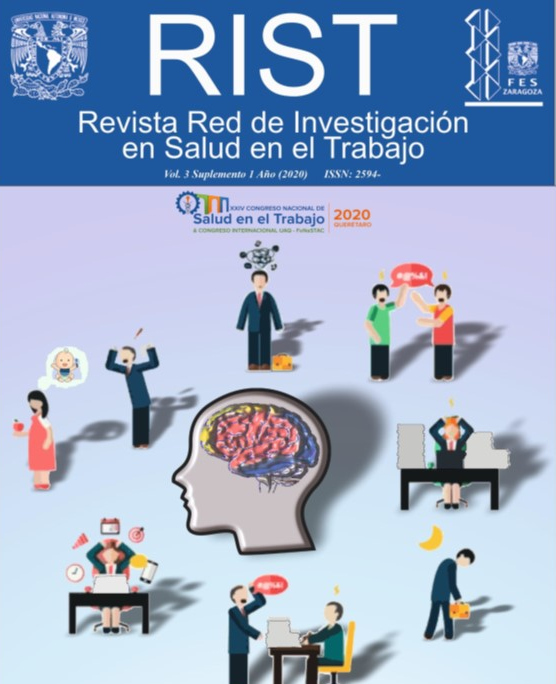Mild Neurocognitive Disorder and Post-traumatic Epilepsy consequence of a job injury, its legal assessment. A case report / Trastorno neurocognitivo leve y epilepsia postraumática consecuencia de un accidente de trabajo, valoración médico legal.
Consecuencia de un Accidente de Trabajo su valoración médico legal en México. Reporte de caso
Resumen
Se presenta caso de operador de revolvedora quien sufrió Traumatismo Cráneo Encefálico (TCE) severo con datos de hemorragia intracerebral temporo-parietal izquierda, al recuperar la conciencia presento datos de amnesia retrograda y anterógrada, afasia, hemiplejia izquierda, anosognosia, agnosia visual asociativa e hipoacusia, actualmente con problemas de memoria a corto plazo; agnosia visual asociativa, alteraciones en el sueño e inicia con crisis convulsivas.
##plugins.generic.usageStats.downloads##
Citas
Mula M. Psychiatric aspects of posttraumatic epi-lepsy: A still unexplored area. Epilepsy Behav. 2019; 101(Pt A):106598.
Allan. LC. Síndrome Postconmocional y su valoración Médico legal. . Med leg Costa Rica [Internet]. 2014; 31:55-64.
Ali I, Silva JC, Liu S, Shultz SR, Kwan P, Jones NC, et al. Targeting neurodegeneration to prevent post-traumatic epilepsy. Neurobiol Dis. 2019;123:100-9
Lucena Romero J. Valoración médico-forense del daño cerebral traumático. . Revista Española de Neuropsicología. 2001.; 3(2):95-130.

Esta obra está bajo licencia internacional Creative Commons Reconocimiento-NoComercial-CompartirIgual 4.0.
Al proponer un trabajo para su publicación, los autores aceptan las condiciones contenidas en las presentes normas de la revista Red de Investigación en Salud en el Trabajo y conservan los derechos patrimoniales sobre el artículo en cuestión, a fin de que ésta lo edite, publique, reproduzca, difunda, comercialice, traduzca o autorice su traducción a cualquier idioma.
Los artículos aceptados serán publicados en la revista Red de Investigación en Salud en el Trabajo bajo una licencia de Creative Commons Reconocimiento-NoComercial-CompartirIgual 4.0 Internacional.
Los trabajos propuestos deberán ser originales e inéditos, y no podrán presentarse a ninguna otra revista mientras se encuentren sometidos a la consideración de la revista Red de Investigación en Salud en el Trabajo. También se reciben trabajos completos publicados previamente en forma de resumen, o trabajos no publicados presentados en congresos o seminarios.
Todos los trabajos serán publicados con pleno conocimiento de los autores.
Los artículos firmados son responsabilidad de los autores y no necesariamente reflejan la opinión de la revista, o de la institución a la que están afiliados los autores.















